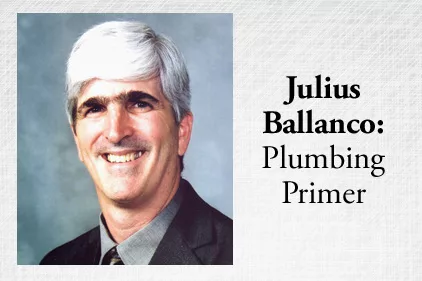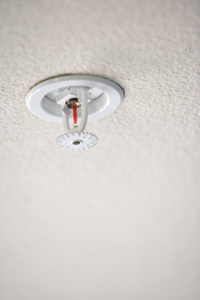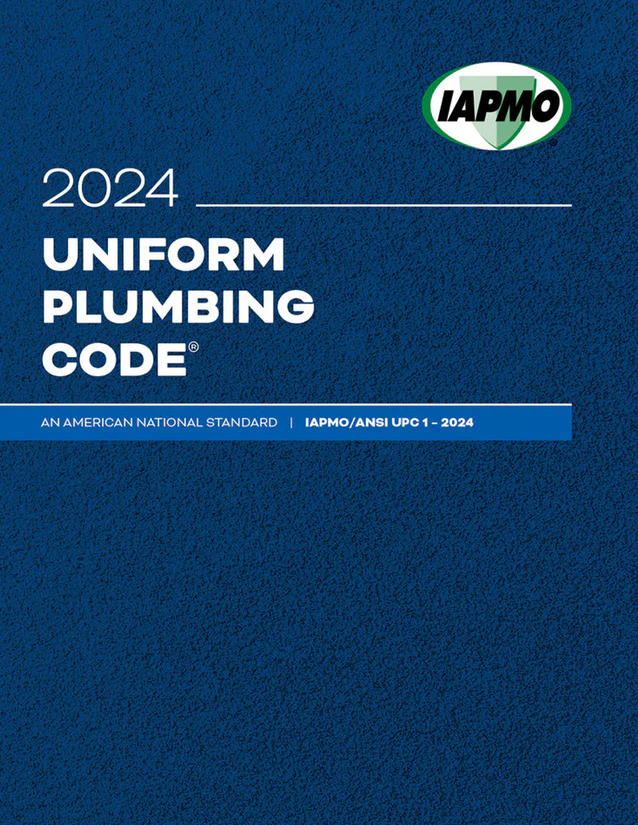Plumbing code changes that help you
We have this tendency to curse the plumbing code.

We have this tendency to curse the plumbing code. Our views are normally based on the code restricting us, or even prohibiting us, from doing something we think should be allowed. I like to think codes also can be our friend. Code documents allow us to install new technology or new materials.
On a national level, the new codes have just been completed. While they have the year 2015 on the documents, they are already finished as far as content goes. With every new edition of the code, good and bad things are added that impact you as a contractor. Let me highlight the positive.

|
| ©thinkstockphotos.com/MikeG |
The first thing you should know is the residential code continues to require residential sprinkler systems for all one- and two-family dwellings, as well as townhouses. If you still haven’t looked into multipurpose piping systems, which is the combined sprinkler and cold water supply system, you should. While it may not be for you, you still may want to consider teaming up with a residential sprinkler contractor.
I recently had the opportunity to see a townhouse project in Washington where the sprinklers were a multipurpose piping system. However, the sprinkler contractor left connections for the plumbing contractor to connect to the fixtures. The two contractors worked together to have a low-cost system. Again, check out residential sprinkler systems and how you can become involved.
All the codes added a new standard on pumped-waste systems. The standard was previously called the macerating toilet standard. It still addresses macerating toilets, but added requirements for pumped-waste systems.
This newer style of fixture allows you to add a fixture anywhere in the building and pump the waste to a drain. Manufacturers have developed special fixtures with a built-in pumped-waste component. This change will make it much easier to add fixtures to any building. While the current pumped-waste fixtures are predominantly residential, there could be commercial fixtures in the future.
Another new accepted product is trap seal protection devices. This new category of device protects the trap seal from evaporation. There is no added water or waste connection to the floor drain trap. You simply push the device into the floor drain opening. Water passes through the device, and it stays closed to prevent evaporation when there is no use of the fixture. These products are readily available from a number of manufacturers.
I also should mention the beauty of these devices is they can be added to any existing floor drain. If your customer has had an odor problem, solve it by installing a trap seal protection device.
The flow rates for a number of fixtures have been lowered. This allows you to reduce the water pipe size for a water distribution system. The lower flow rates reflect the current water use. For many years, the plumbing code has been requiring the pipe sizing to be based on water flow rates that date back to the 1980s. As a result, the piping has been oversized. That is not to say over sizing is bad, it just simply shouldn’t be required by the code.
That’s not all …
Perhaps the most significant change to the plumbing code is the requirements for storm drainage sizing. The change was accepted to the International Plumbing Code. This change was based on the research done by the ASPE Research Foundation. The storm drainage systems will have to be engineered to determine the proper size.
Contractors have been asking for a Reader’s Digest approach to the new sizing method. For most systems, you will see the roof drain get smaller and the storm drainage piping get larger. Basically, manufacturers produce very efficient roof drains. They can drain more water than just about everyone in the profession thought they could. Hence, you don’t need as large a roof drain to get the water off the roof. However, the roof drains are so efficient, the pipe connecting to the roof drain has to be larger to accommodate the load.
The change in the roof drainage sizing will make the weird anomalies disappear. I’ll miss getting the phone calls about the manhole cover that shot 10 ft. in the air during the recent rainstorm. Or the water shooting out of the second and third floor balcony drain during the microburst. Or worse yet, the fitting that blew apart inside the building during that heavy rainstorm. By the way, I am not making any of this up; all these things have really occurred.
Cleanouts, cleanouts and more cleanouts. Both the ICC International Plumbing Code and the IAPMO Uniform Plumbing Code added requirements for cleanouts. One of the arguments is that there never seems to be enough cleanouts when you need one. So the codes have gone into great detail regarding where, when and how cleanouts must be installed. I’m not sure that, in the end, you will see many more cleanouts. But there will be an increase in the number of cleanouts required.
On the material side, language was added to the code to address the federal no-lead requirements. Rather than having to look up a federal law, the requirements will be in the plumbing code.
A nice added feature to the no-lead requirements is the reference to NSF 372. The code will require manufacturers to list their no-lead products to this standard. As a contractor, all you will have to do is check to see that a product has a listing to NSF 372. If it does, you have fulfilled your obligation to make sure that no-lead products are installed. The other important feature is that the code will identify when no-lead is required and where leaded products may be used.
There are many other changes to the plumbing codes, but these are some of the positive items. Be sure to pick up a copy of the new plumbing code, whether it be the International Plumbing Code or the Uniform Plumbing Code. If you prefer, you can get the codes in electronic format. That way you can have them on your computer rather than keeping a bookshelf full of codes. Plus, it’s easier to search for a requirement in the electronic version.
HELPFUL LINKS:
Looking for a reprint of this article?
From high-res PDFs to custom plaques, order your copy today!







